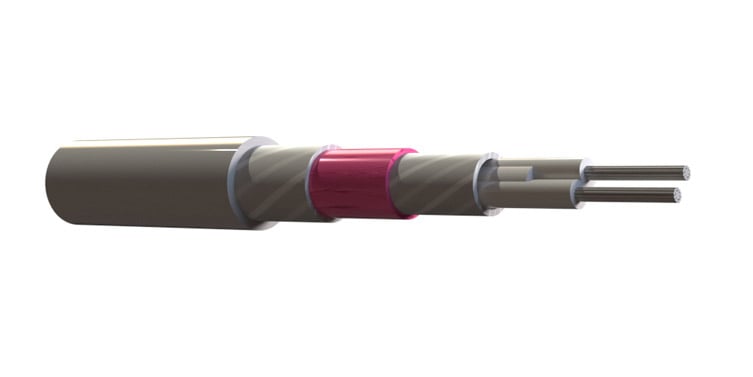Custom cables
With over 30 standard insulation and jacket materials and a wide range of approvals and manufacturing capabilities, we work closely with our customers to find smart solutions that match their application and budget.
A shield, or screen, is a metallic layer placed over one or more insulated conductors to either protect them from, or prevent them causing electrical interference.

There are two main forms of foil screen: a polyester or polyimide backed aluminium tape or a copper foil. Both of these require a drain wire (usually the same size as other cores in the cable) to be able to terminate them into a connector, and this will often be placed in the interstices of the cable. Drain wires are not always necessary if the foil is placed in contact with a braid. Foil screens offer 100 % optical coverage which is more effective at higher frequencies. They generally don't add much to the overall diameter of the cable and are quite cost-effective.
Lapped (also known as served) screens are made of multiple wires, wound around the cable in the same direction. These are usually used in coiled cables where the cable will flex repeatedly in one direction only. Braided screens have wires interwoven around the cable in both directions, giving them much better durability, and omni-directional flexibility.
Because lapped and braided screens are made of multiple copper wires they provide much better shielding at lower frequencies than foils. The number and angles of the wires can also be adjusted to increase or decrease the optical coverage as desired.
Optimised braids are increasingly common, particularly in military applications. These braids will have a very high optical coverage (>90 %) but use braid angles that still allow for easy push-back of the braid, making the cable easy to terminate.
To give the best screening over a range of frequencies, multiple braided and foil screens may be used together. By adding a my-metal foil we are able to shield the cable not only from electrical but also magnetic interference. However, this combination of screen does significantly limit cable flexibility.
There are three commonly used methods of mechanical protection. Stainless steel wire braids are offered by Habia in preference to heavy galvanised steel wires as these offer significant crush and cut-through resistance without the bulk of a galvanised steel wire armour. Aramid braids can be used where the cable must remain flexible, also offering significant cut-through resistance, along with excellent tensile strength.
At Habia, we specialise in designing and manufacturing custom cables and harnesses for demanding applications. With access to a wide range of metals and materials, our experienced designers can advise on the ideal shielding solution for your specific application.